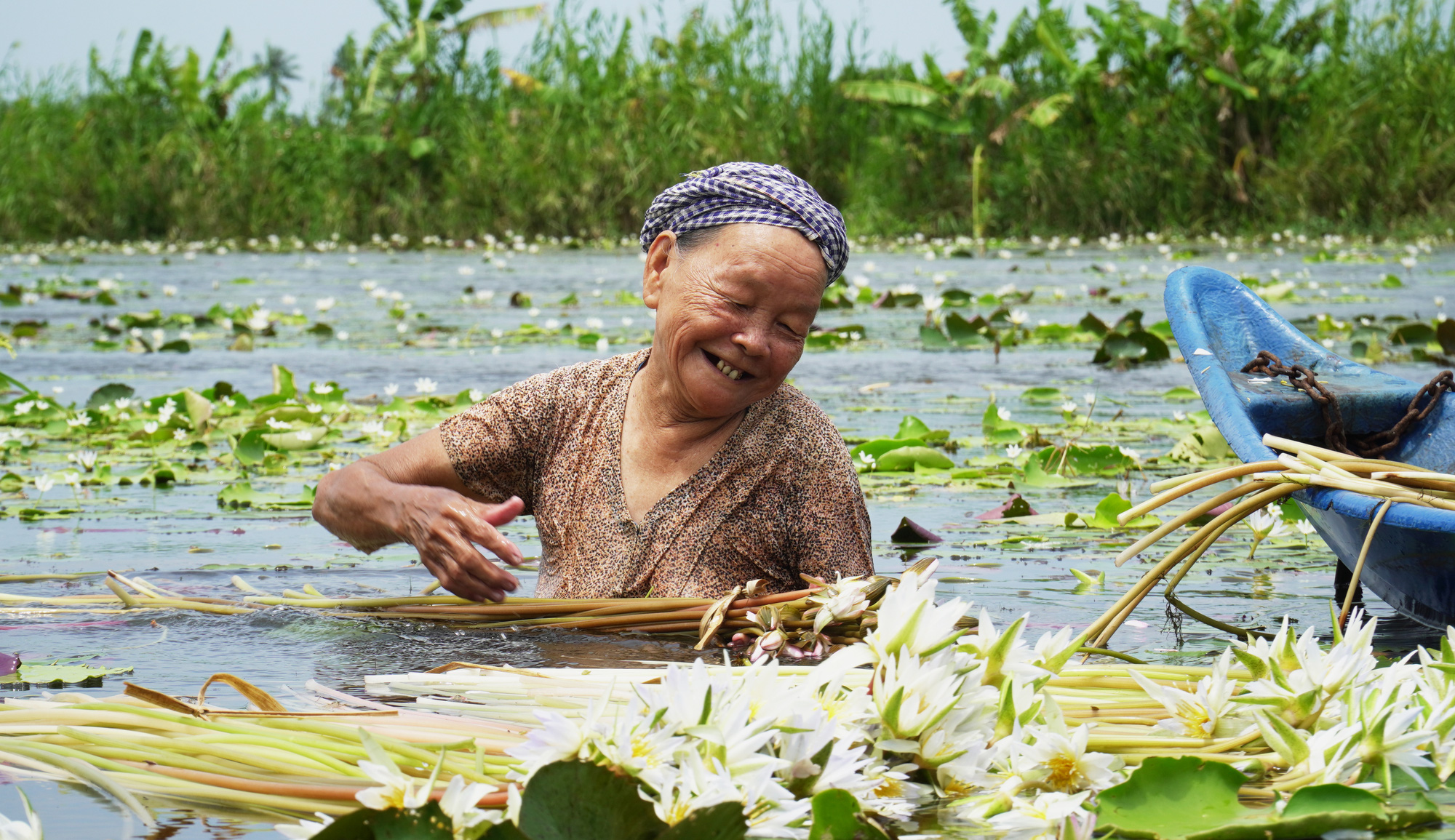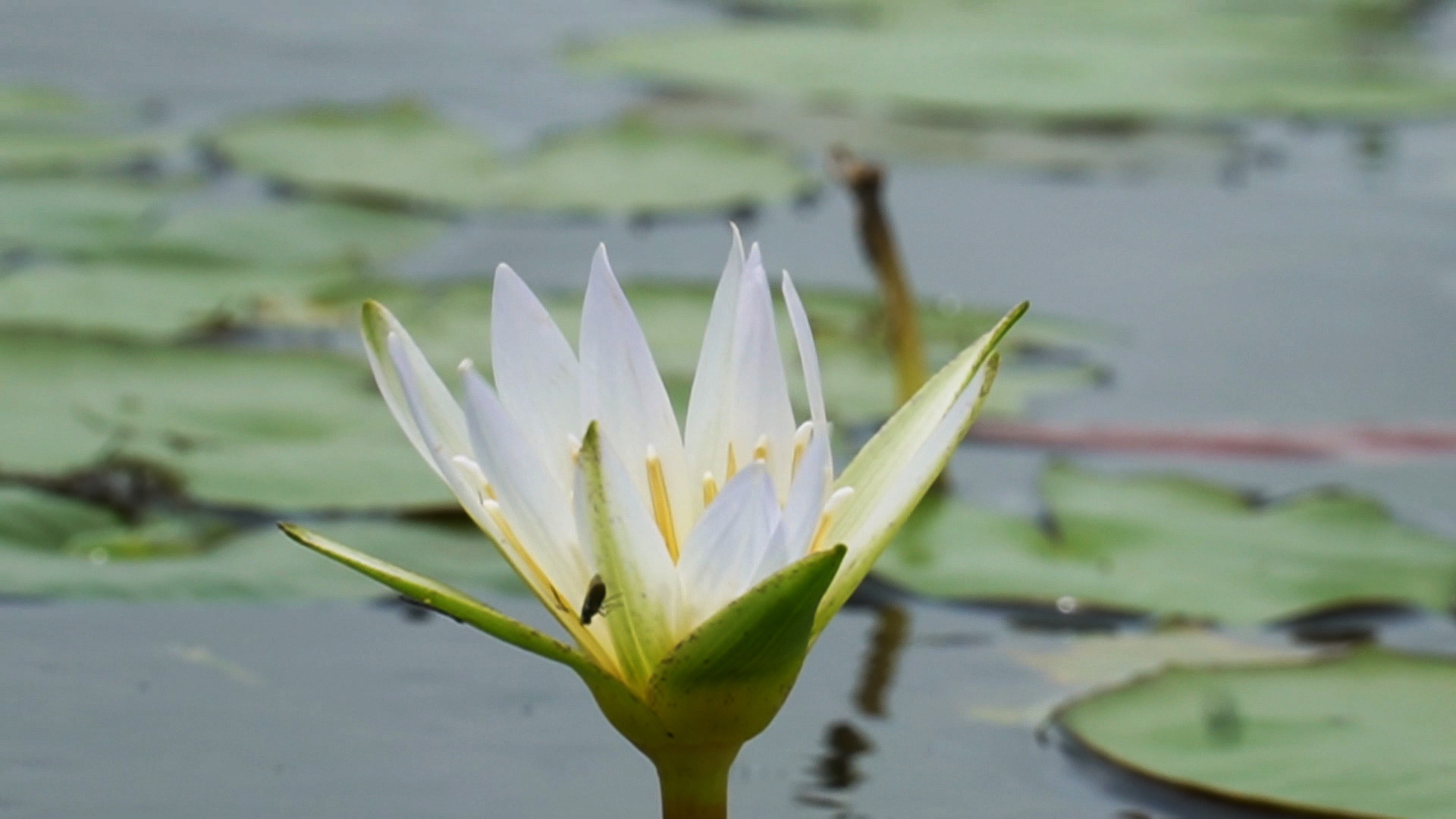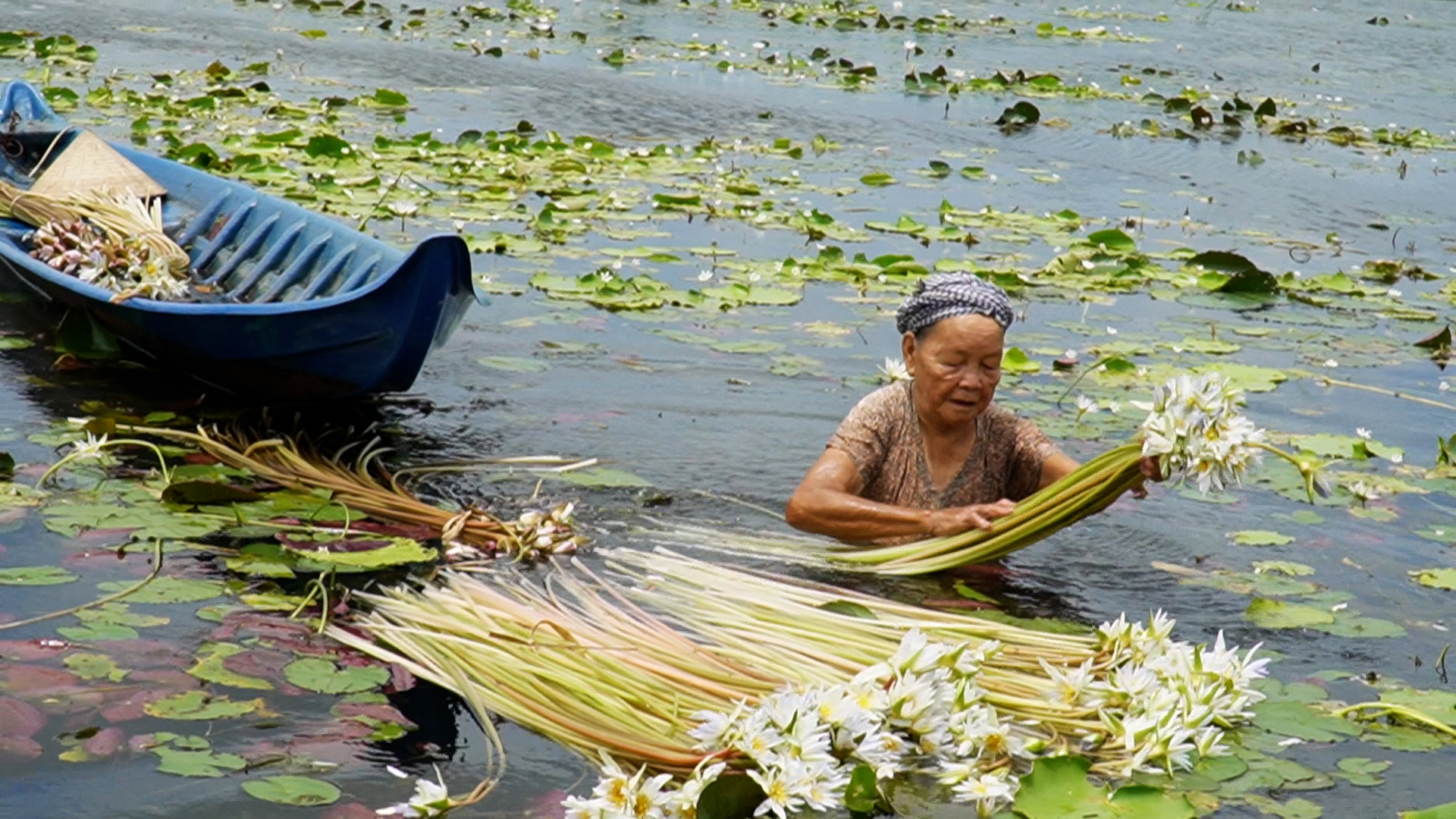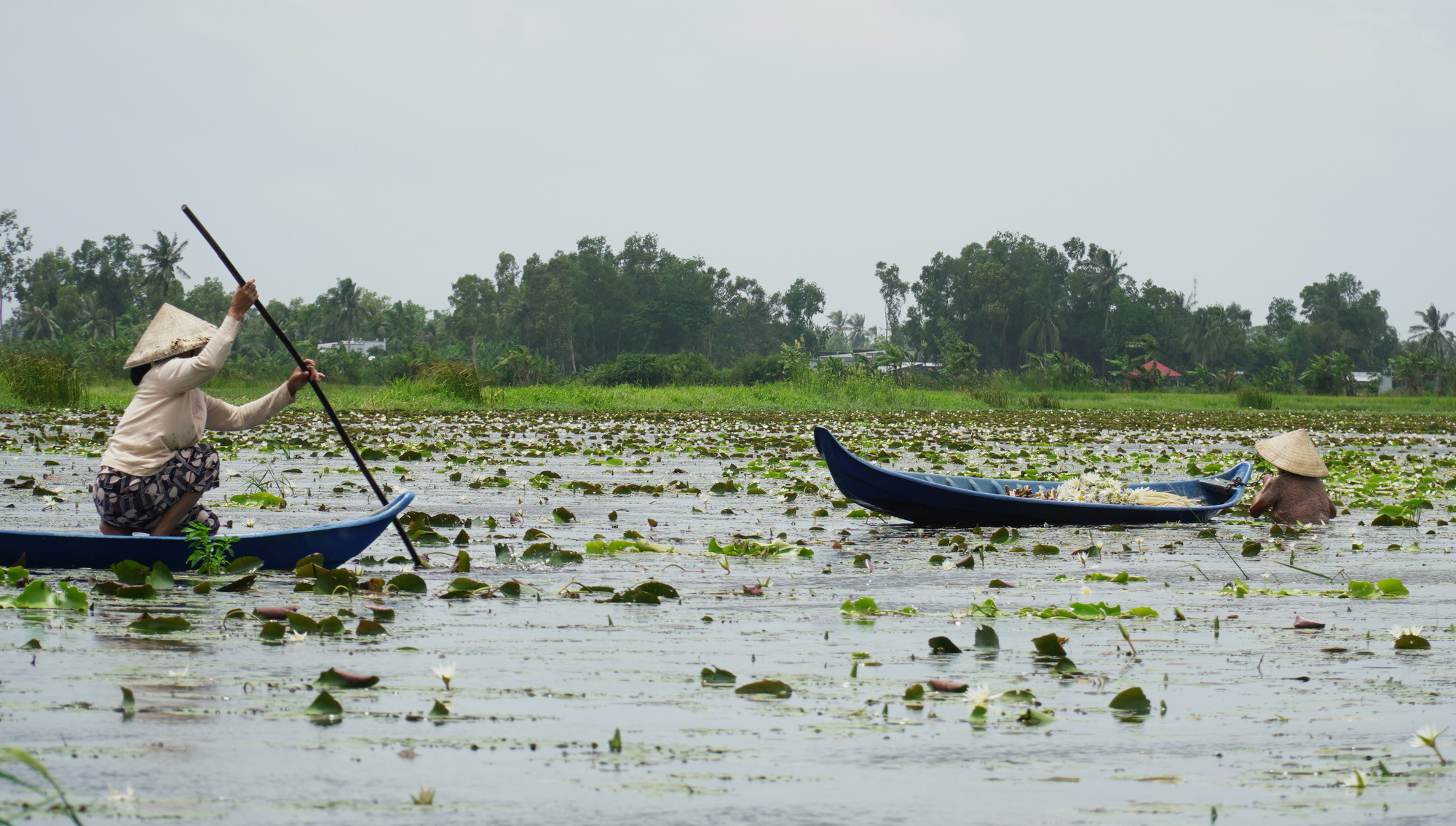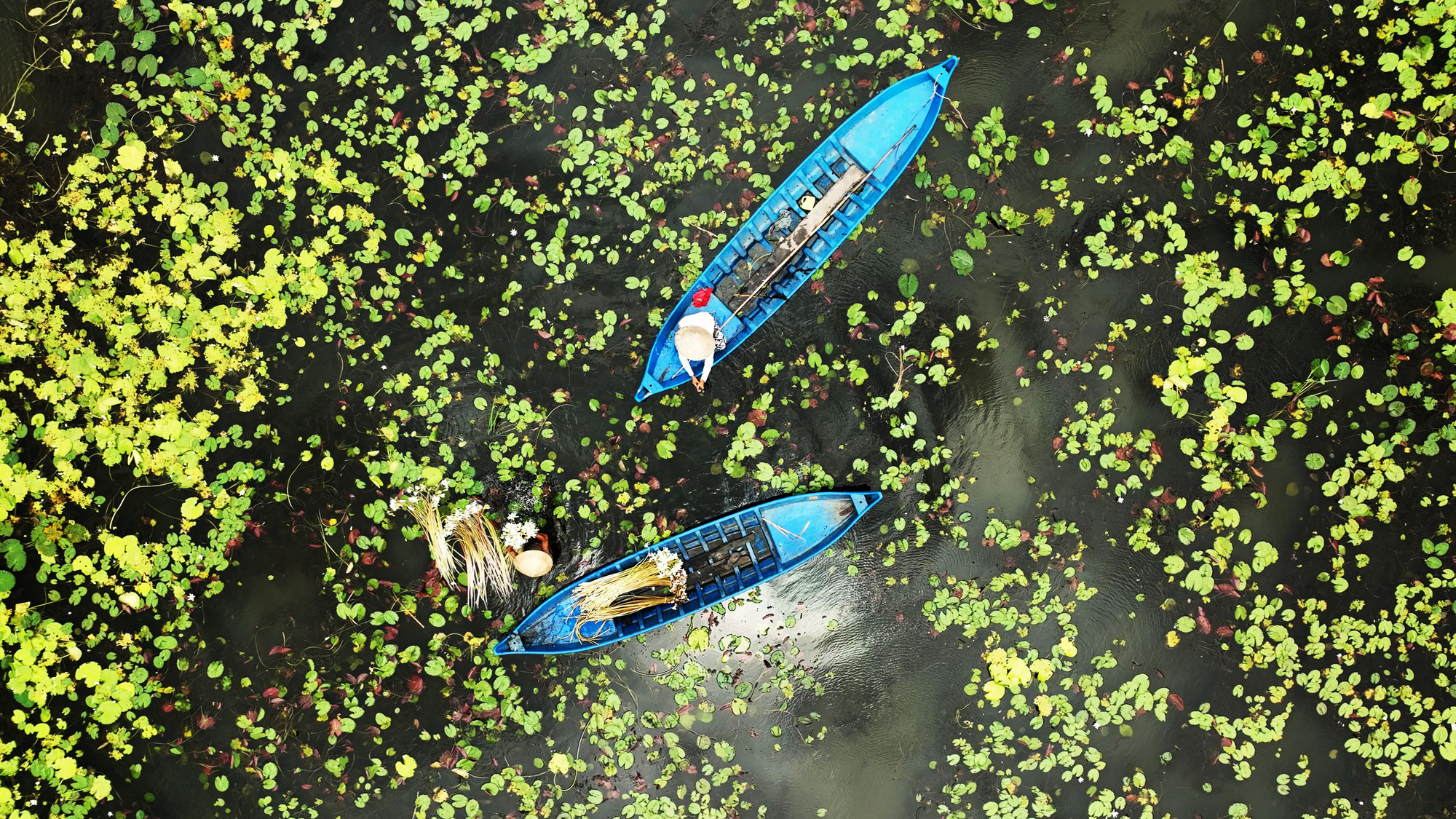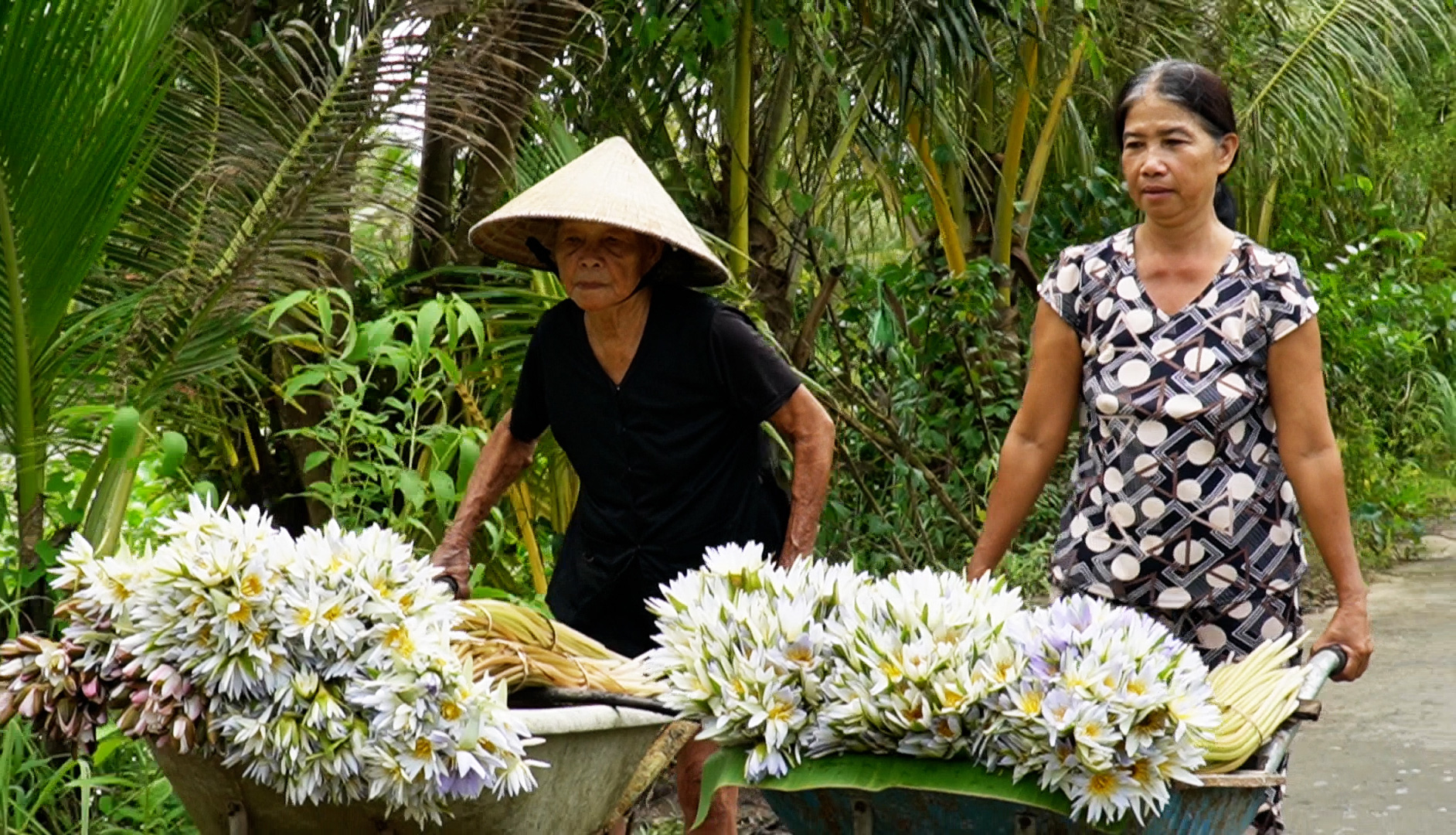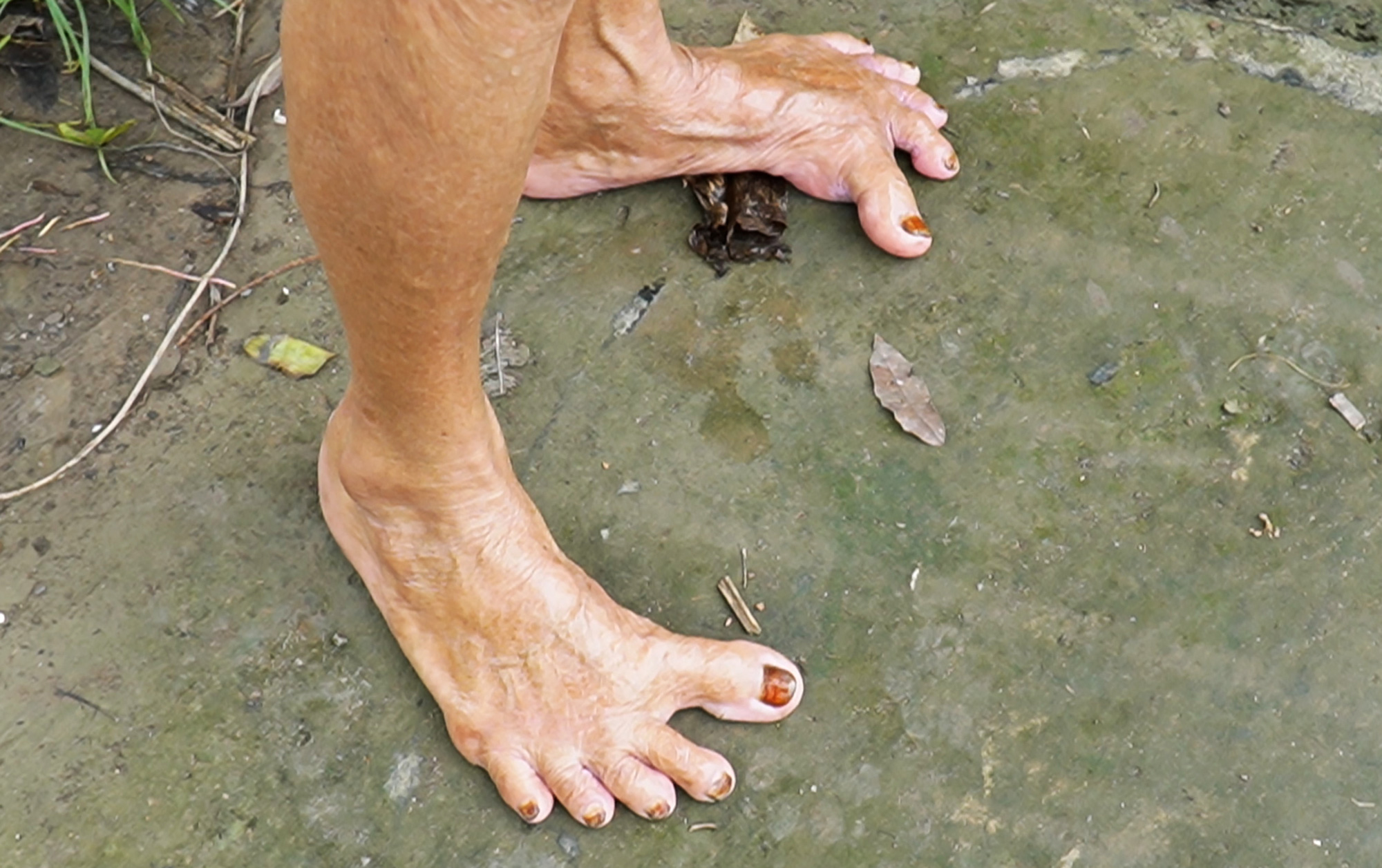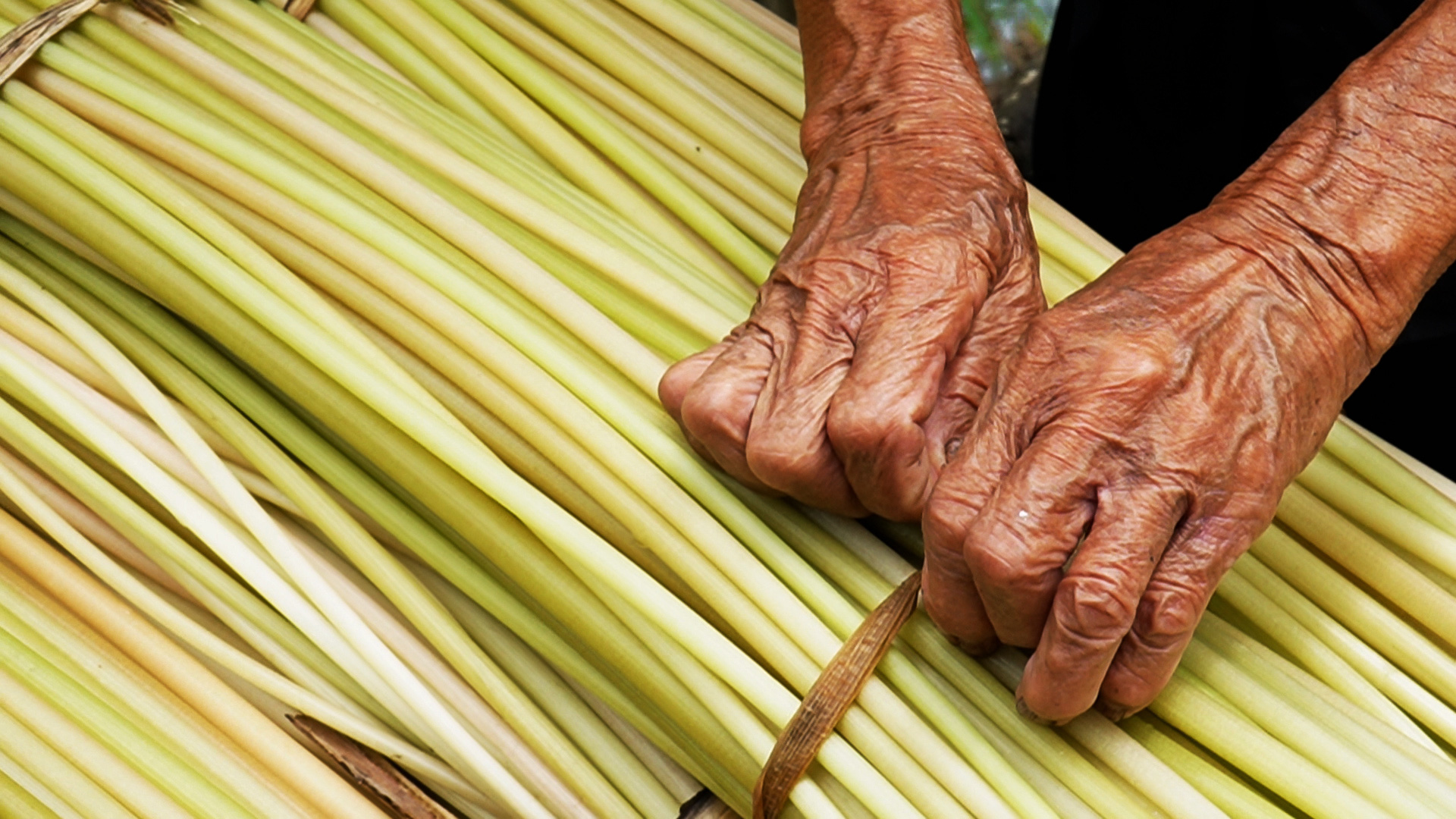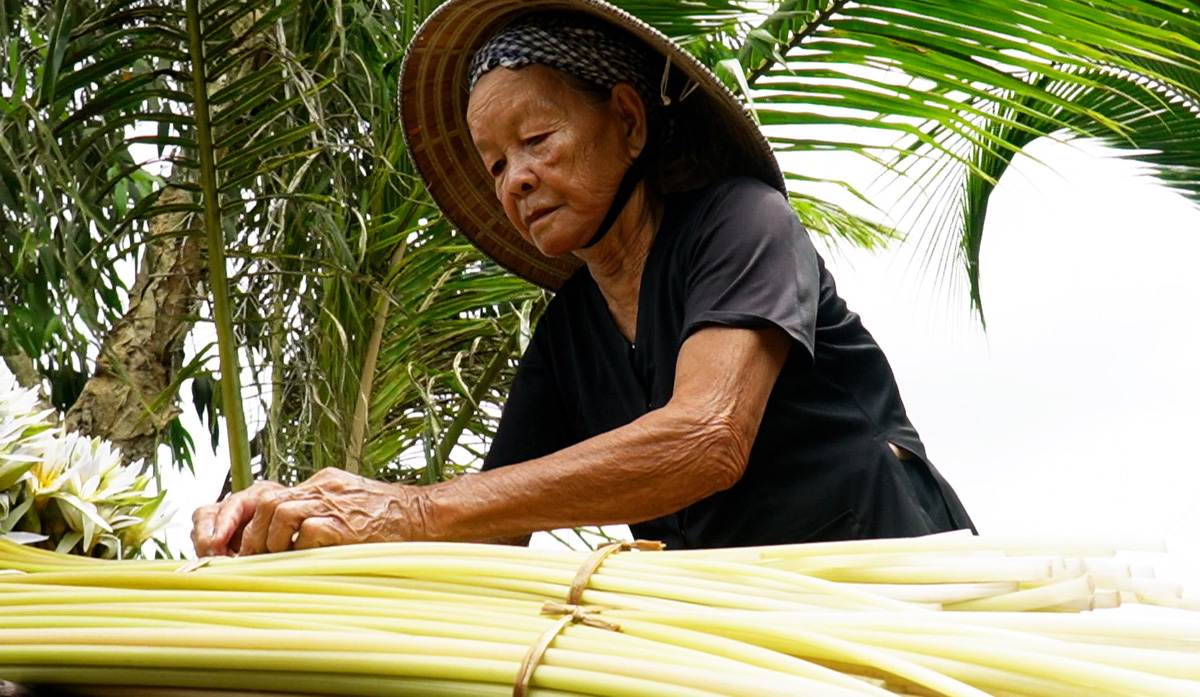Heavy rains are allowing water lilies to flourish in the deeply flooded low-lying areas of Ca Mau, Vietnam’s southernmost province, bringing alternative income opportunities to local residents.
Markets and roadside stalls abound with vendors selling water lilies in the Mekong Delta region during the ‘floating season,’ the period from August to November when water levels rise and rivers and canals flood low-lying areas.
The most famous variety of water lily in the Mekong Delta blooms only at night, earning it the nickname bông súng ma, or 'ghost water lily.'
Despite being the only province in the delta which the Mekong River does not pass through, water lilies grow plentifully in Ca Mau’s flooded fields, transforming them into seas of white, purple, and pink once the lilies fully bloom.
|
|
| A white water lily blooms in a flooded field in Tran Van Thoi District, Ca Mau Province, southern Vietnam. Photo: Thanh Huyen / Tuoi Tre |
Water lilies belong to the aquatic plant family and are characterized by long spongy stems and round leaves that float on the surface of the water.
Though Ca Mau farmers typically spend summer and autumn harvesting rice, this year’s heavy rains have caused excessive flooding in rice paddies, leaving residents like 80-year-old Tran Thi An from Hamlet 5, Khanh Binh Dong Commune, Tran Van Thoi District without a rice crop to harvest.
Instead, An spends her days wading through her 4,000-square-meter rice paddies, plucking up water lilies which she can sell while waiting for the next rice crop.
|
|
| Tran Thi An harvests water lilies in a flooded field in Tran Van Thoi District, Ca Mau Province, southern Vietnam. Photo: Thanh Huyen / Tuoi Tre |
An is not the only rice farmer who has begun collecting water lilies.
Many families in Tran Van Thoi District are doing the same, allowing them to earn at least a modest income in these challenging times.
During the dry season, water lily roots lie dormant deep in the ground, awaiting the return of water to revive and grow.
Once the rains come, they flourish in rivers, canals, fields, and low-lying ponds.
Wherever water flows, water lilies follow, often measuring several meters in length.
|
|
| Women harvest water lilies in a flooded field in Tran Van Thoi District, Ca Mau Province, southern Vietnam. Photo: Thanh Huyen / Tuoi Tre |
Only a few flowers bloom on each clump of lilies.
These flowers are gently plucked each morning by harvesters who are careful to avoid damaging the underlying lily pad.
The flowers are then washed and sorted into small bundles.
While many enjoy looking at the flowers, it is their long stems that are most coveted.
A beloved specialty in the Mekong Delta, the stems are a popular ingredient in various salad, soup, and hotpot recipes.
They can also be eaten raw with fish sauce.
|
|
| Women harvest water lilies in a flooded field in Tran Van Thoi District, Ca Mau Province, southern Vietnam. Photo: Thanh Huyen / Tuoi Tre |
Women often take the lead in harvesting water lilies while men spend the day fishing.
When water lilies are in season, supply is high and prices are low – typically around VND2,000-3,000 (US$0.081-0.12) per kilogram.
A dedicated harvester can earn VND50,000-100,000 ($2.03-4.07) each day.
|
|
| Women push carts carrying freshly harvested water lilies to the market in Tran Van Thoi District, Ca Mau Province, southern Vietnam. Photo: Thanh Huyen / Tuoi Tre |
Those who pick water lilies often emerge with telltale signs of their labor: both big toes curled inward from hours spent wading through water.
While the work is arduous, it provides a vital alternative source of income for rural women who live and work in the rice fields all year round.
|
|
| Both big toes curl inward, the telltale signs of a water lily harvester. Photo: Thanh Huyen / Tuoi Tre |
|
|
| Tran Thi An gathers freshly harvested water lilies before taking them to the market in Tran Van Thoi District, Ca Mau Province, southern Vietnam. Photo: Thanh Huyen / Tuoi Tre |
|
|
| Tran Thi An gathers freshly harvested water lilies before taking them to the market in Tran Van Thoi District, Ca Mau Province, southern Vietnam. Photo: Thanh Huyen / Tuoi Tre |
Like us on Facebook or follow us on X to get the latest news about Vietnam!



